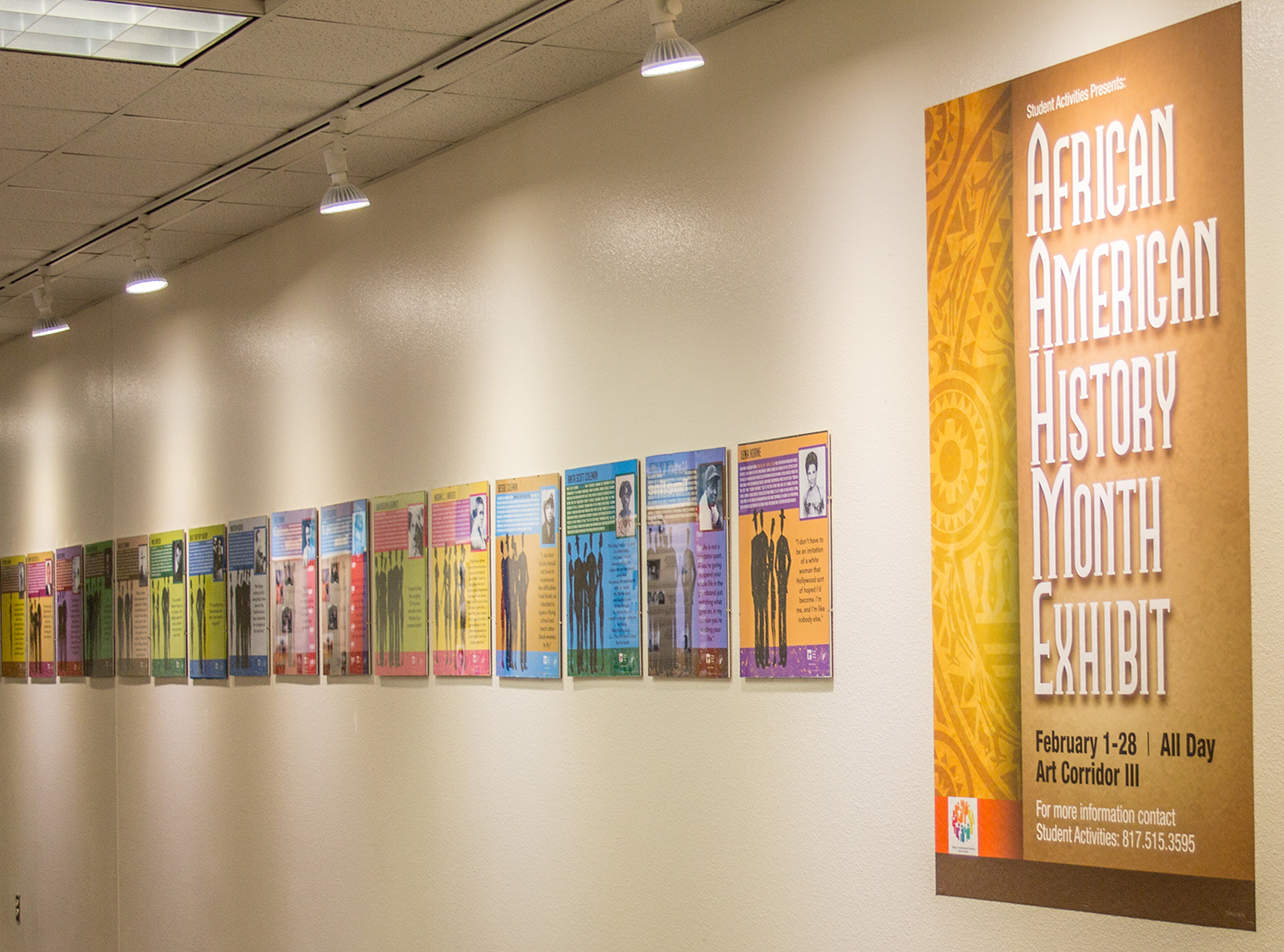By Jamil Oakford/managing editor
Students walking to and from classes on SE Campus will walk through a hall that echoes back to the life and times of Martin Luther King Jr.
During Black History Month, students can stop by Art Corridor III and learn about the prominent figure of the Civil Rights Movement through a visual timeline, assembled by a committee on campus.
“The exhibit was brought on by the want to display something we created,” student activities coordinator Frankie Ward said.
Compiled of images, facts and figures, the timeline will serve as a way for students to experience his life, beginning with his birth in 1929.
First conceived in 2014, the SE committee that put this together put a similar timeline together for its Coming Together to Advance a Dream event in December of that year.

Photos by Karen Anderson/The Collegian
Karen De Simone, SE student development services administrative assistant, said after compiling pictures and information on King’s life for the 2014 event, the committee was excited to see how it was received.
Located in the Bistro area of campus, it focused on the cultural influences, and committee members were in charge of providing information for each decade represented.
“The display was a great hit,” she said. “As you walked through it, you could feel the conflicting feelings and depth of courage of those who put their lives on the line for others.”
This year’s timeline accompanies a project from the district’s Celebrating Strides committee featuring the biographies of African-Americans who pioneered different areas in history.
Ward said this hopefully expands the conversation of prominent figures in African-American history beyond Frederick Douglass.
“We want that just because this world is like a melting pot,” she said. “We want to have students look at African-American history in a different perspective. That there were positives in there as well, so we don’t just focus on the negatives.”

